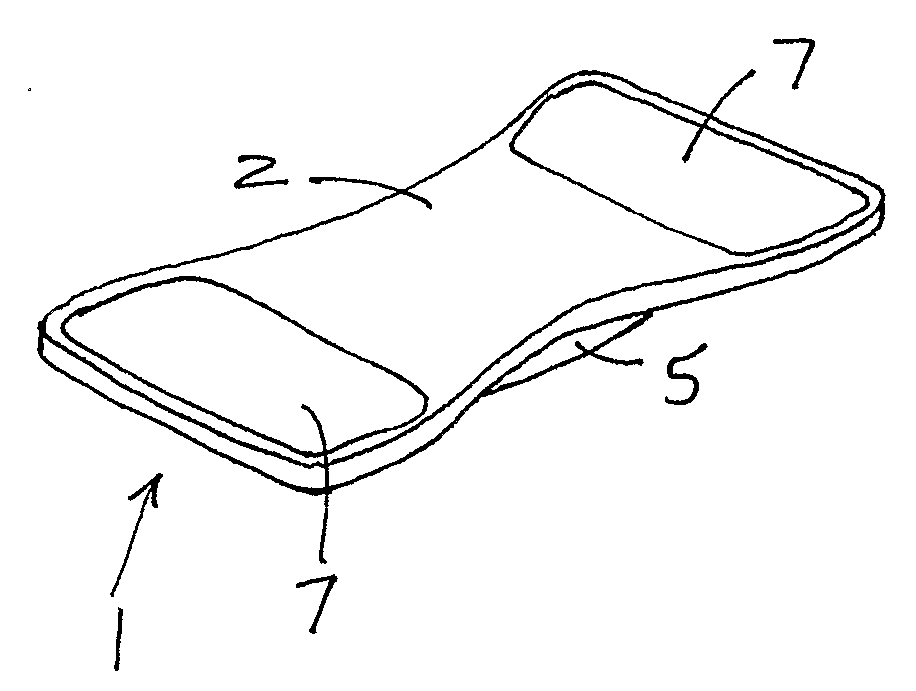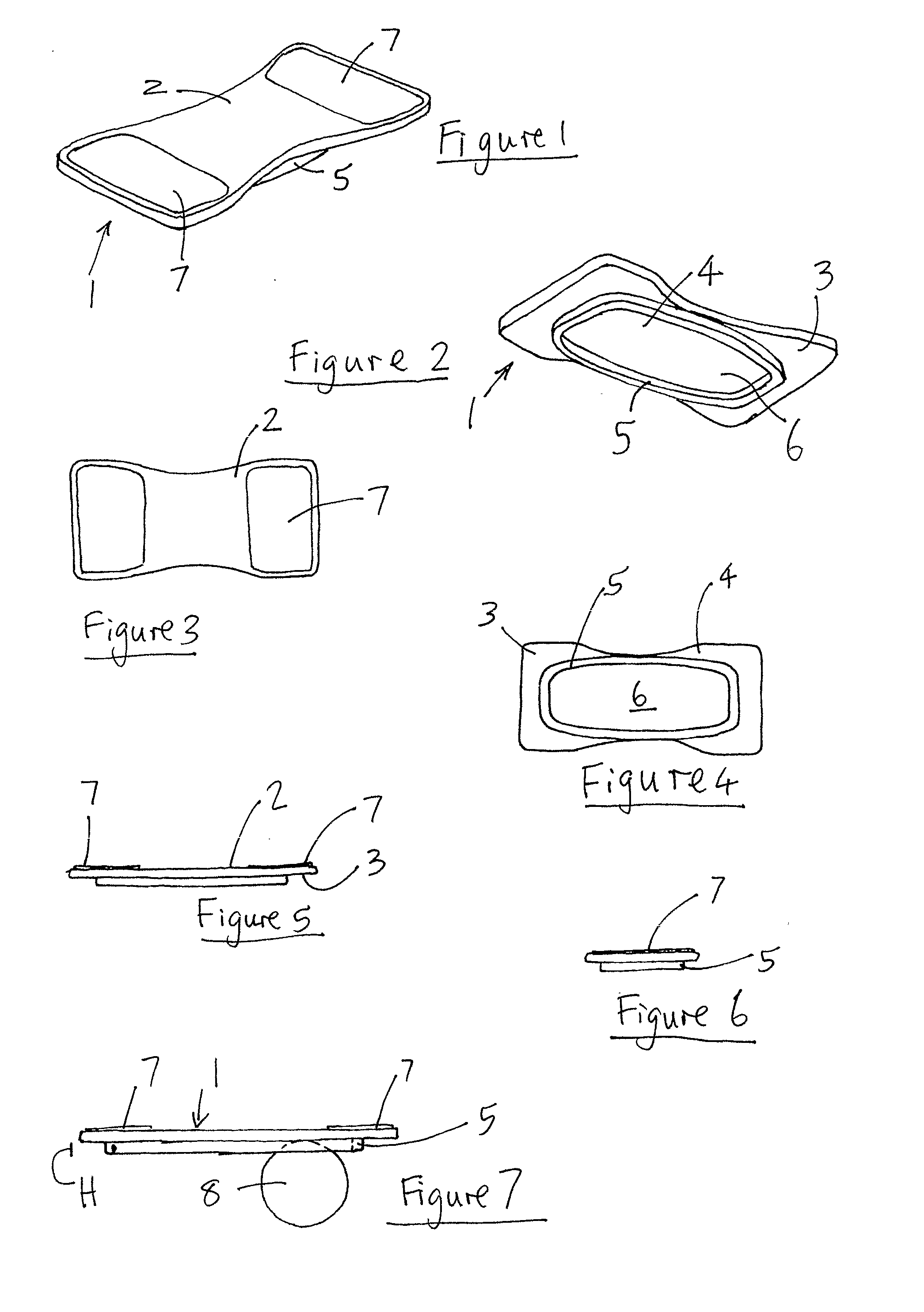Balance board
a balance board and balance technology, applied in the field of balance boards, can solve the problems of significant manufacturing problems, inability to practice the sport concerned, and limitations in the exercise which the user can perform, and achieve the effect of reducing the likelihood of the user falling off the balance board
- Summary
- Abstract
- Description
- Claims
- Application Information
AI Technical Summary
Benefits of technology
Problems solved by technology
Method used
Image
Examples
Embodiment Construction
[0034]Referring first to FIGS. 1 to 7, a balance board 1 has a top side 2 and an under side 3. The under side 3 includes a substantially flat region 4 to which is mounted an endless wall member 5 which, as explained in more detail below, is preferably made in several sections which are joined or abutted.
[0035]The endless wall 5 depends from the under side 3 and defines a portion 6 of the flat region 4 within and bounded by the wall 5. As can be seen, in particular from FIGS. 2, 4 and 5, the bounded portion 6 makes up the greater part of the under side of the board.
[0036]Top side 2 of the board is provided with spaced contact surfaces 7 at opposite longitudinal ends of the top side 2. Contact surface portions 7 are adapted to prevent a user's feet from slipping when using the board. In a preferred arrangement, a grip tape, for example the tape available from Heskins Ltd of Chorley, Lancashire, PR6 8RQ under the Trademark Safety-Grip™ or the tape available from TBS Eram-Industrie of C...
PUM
 Login to View More
Login to View More Abstract
Description
Claims
Application Information
 Login to View More
Login to View More - R&D
- Intellectual Property
- Life Sciences
- Materials
- Tech Scout
- Unparalleled Data Quality
- Higher Quality Content
- 60% Fewer Hallucinations
Browse by: Latest US Patents, China's latest patents, Technical Efficacy Thesaurus, Application Domain, Technology Topic, Popular Technical Reports.
© 2025 PatSnap. All rights reserved.Legal|Privacy policy|Modern Slavery Act Transparency Statement|Sitemap|About US| Contact US: help@patsnap.com



